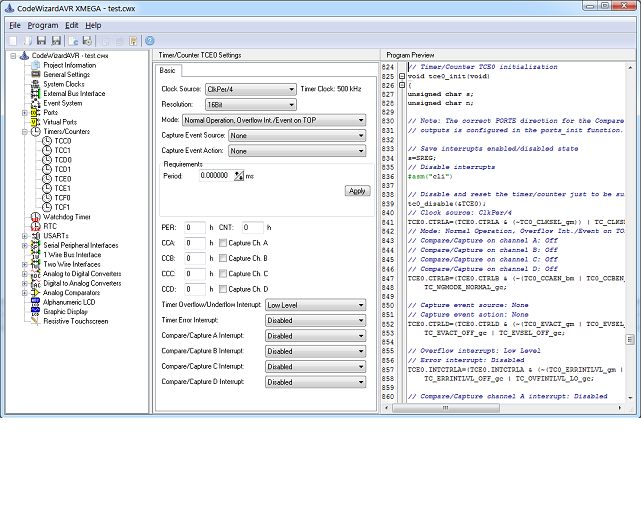Code Wizard Avr Free Download
Home > Topics > Introduction to AVR microcontrollers
|

Download Wizard101. Schools of Magic. Player vs Player. 1986 alpenlite 5th wheel owners manual diagram. Official Player Guide. Community Guides. Playing Options. Wizard101 KI Free Games. You've earned a code on FreeKIGames.com! You can redeem that code for gold, snacks and items to use in Wizard101. The other reason is it has fitur Code Wizard AVR that help us to configure internal function of AVR microcontroller easily, like Timer, INT0, I/O, USART etc. Why use C language to program AVR microcontroller?Atmel has announce that AVR microcontroller designed and optimized using Assembly and C language. Many resource mention that C more faster. Download Free eBook:Embedded C Programming And The Atmel AVR - Free epub, mobi, pdf ebooks download, ebook torrents download. And using the Code Wizard Code. You can learn a lot with the evaluation codeVision. You will certainly learn how to write concise code because the size is limited. You obviously have to buy a full license to create large programs. But then you get a wide range of support for specific hardware. WinAvr or avr-gcc is free but has a steeper learning curve. Avr Project Wizard information page, free download and review at Download32. Code Generator for Avr Microcontroller Eclipse Public License All Software Windows Mac Palm OS Linux Windows 7 Windows 8 Windows Mobile Windows Phone iOS Android Windows CE Windows Server Pocket PC BlackBerry Tablets OS/2 Handheld Symbian OpenVMS Unix.
Code Wizard Avr Free Download Windows 7
Download Code Vision Avr
STEP 8:
--------------------------------------------------------
This will open the Hello_embedded.c file in codevision window.
(If not so then note pad window is opened click on the minimize button to view Hello_embedded.c (Encircled with RED circle below!))
Here the codevisioAVR generates the automatic code. Just scroll down to see the creation of the CodeVisionAVR.
At first you will encounter Input/output Ports initializations, as shown below! You can notice that CodevisionAVR has auto-initialized the PORTB as output port with initial value 0x00.
STEP 9:
--------------------------------------------------------
Scroll down till you encounter the while loop at the bottom of the file saying ->
// Place your code here

STEP 10:
--------------------------------------------------------
Let us write Code here!!
 Logic is ->
Logic is ->- Wait for few milliseconds
- Change the status of the PORTB to all ones
- Wait for few milliseconds
- Change the status of the PORTB to all zeros
- So to correct those 2 errors click on the OK button in neighboring window.
- Scroll up the Hello_embedded.c. At the start of file you will find the line saying ->#include <mega32.h>
- Add #include<delay.h> below it.

- Now again build the project!
- PROJECT > BUILD ALL
- And here will not be any error!!
- To ensure successful compilation check
- cvavr2>Bin>Exe. This folder must have Hello_embedded.hex file.